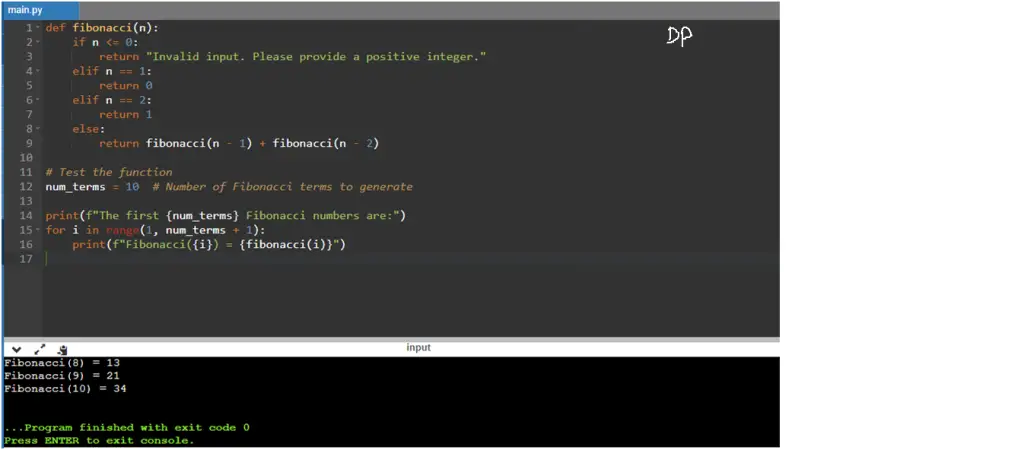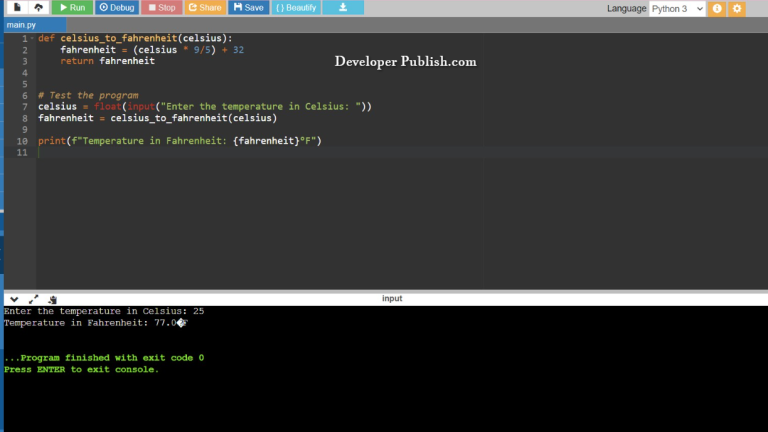This Python program uses recursion to generate the first n Fibonacci numbers and displays them in a list.
Program Statement
Given an integer n, we need to find the first n Fibonacci numbers using recursion and display them in a list.
Python Program to Find Fibonacci Numbers using Recursion
def fibonacci(n):
if n <= 0:
return "Invalid input. Please provide a positive integer."
elif n == 1:
return 0
elif n == 2:
return 1
else:
return fibonacci(n - 1) + fibonacci(n - 2)
# Test the function
num_terms = 10 # Number of Fibonacci terms to generate
print(f"The first {num_terms} Fibonacci numbers are:")
for i in range(1, num_terms + 1):
print(f"Fibonacci({i}) = {fibonacci(i)}")
How it works
- The
fibonaccifunction is defined, which takes an integernas input and returns the Fibonacci number at positionn. - The function checks for the base cases:
- If
nis less than or equal to 0, it returns an error message stating that the input is invalid. - If
nis 1, it returns 0 since the first Fibonacci number is 0. - If
nis 2, it returns 1 since the second Fibonacci number is 1.
- If
- If
nis greater than 2, the function recursively calls itself withn-1andn-2as arguments and returns the sum of the two resulting function calls:fibonacci(n-1) + fibonacci(n-2). This step repeats until the base cases are reached. - In the main part of the program, a variable
num_termsis set to the number of Fibonacci terms to generate. - A loop is used to iterate from 1 to
num_terms. In each iteration, the loop prints the Fibonacci number at the current position by calling thefibonaccifunction with the current iteration value. - The program executes and prints the first
num_termsFibonacci numbers.
By using recursion, the fibonacci function repeatedly breaks down the problem of finding the nth Fibonacci number into simpler subproblems until it reaches the base cases. The function then combines the results of the subproblems to calculate the Fibonacci number at position n.
Input/Output



